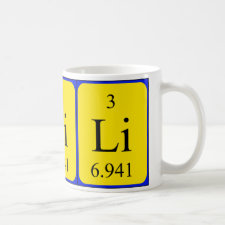
Authors: Shao HH, Li CY, Ma CC, Sun L, Chen RR, Cheng RJ, Liu Y, Yan YS, Sun QF, Wu CX
Article Title: An ion-imprinted material embedded carbon quantum dots for selective fluorometric determination of lithium ion in water samples.
Publication date: 2017
Journal: Microchimica Acta
Volume: 184
Issue: (12)
Page numbers: 4861-4868.
DOI: 10.1007/s00604-017-2493-8
Abstract: An ion-imprinted fluorescent polymer (referred to as CQD@SiO2@IIP) is presented for recognition of lithium ion. The material is based on the use of carbon quantum dots (CQDs) and is prepared by a surface imprinting technique using benzo-15-crown-5 (B15C5) as the complexing agent, methacrylic acid (MAA) as the functional monomer, ethylene glycol dimethacrylate (EGDMA) as the crosslinker, 2,2-azobisisobutyronitrile (AIBN) as the radical initiator, and lithium ion as the template. After optimization of the detection conditions, the relative fluorescence intensity (F0/F), best measured at excitation/emission wavelength of 360 nm/460 nm, varies linearly with the Li+ concentration in the range between 0.5 and 50 μmol L-1, with a limit of detection of 16 μmol L-1. Performance was compared to the non-imprinted material, and the imprinting factor is found to be 4.5. The ion-imprinted fluorescence material was applied to the determination of Li+ in (spiked) water samples and obtained good recoveries ranged from 102 to 111.6%
Template and target information: lithium ion, Li(I)
Author keywords: surface imprinting, fluorescence quenching, selective recognition, Benzo-15-crown-5, Photoinduced electron transfer



Join the Society for Molecular Imprinting

New items RSS feed
Sign-up for e-mail updates:
Choose between receiving an occasional newsletter or more frequent e-mail alerts.
Click here to go to the sign-up page.
Is your name elemental or peptidic? Enter your name and find out by clicking either of the buttons below!
Other products you may like:
 MIPdatabase
MIPdatabase









